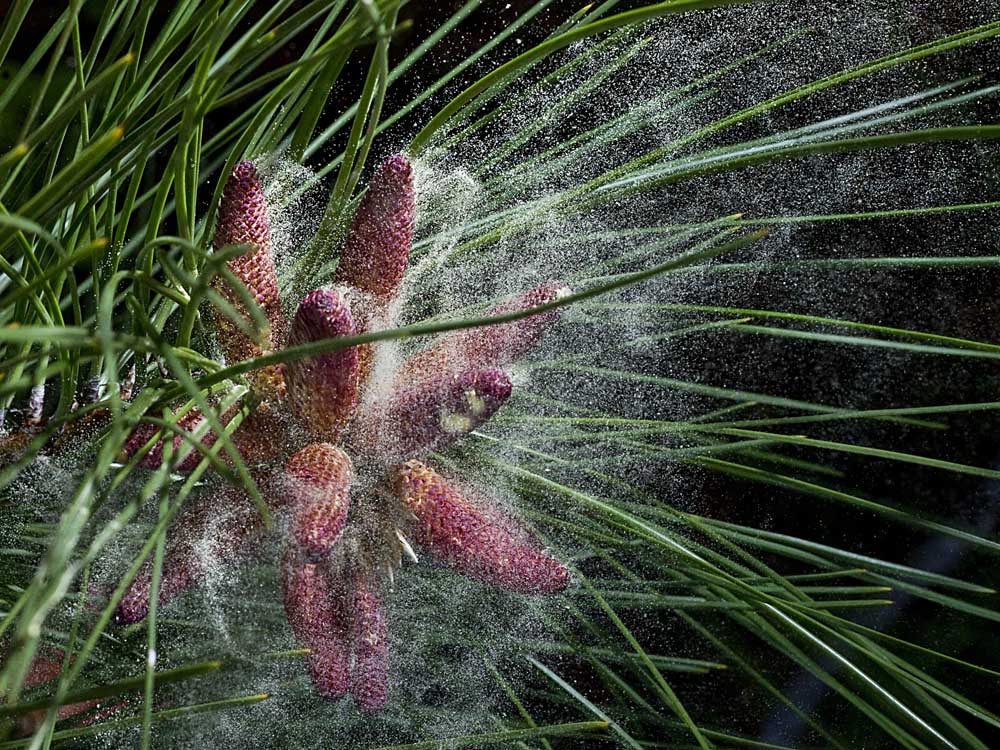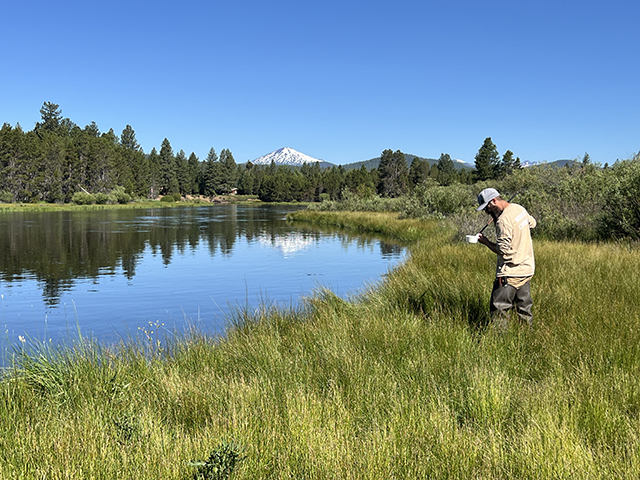That yellow dust you’re seeing? Probably not making you sneeze
Published 12:00 am Thursday, June 4, 2015

- Ryan Brennecke / The BulletinA cloud of pollen is released into the air from a group of cones on a ponderosa pine in Bend on Monday.
As evidenced by the yellow blankets of dust covering cars and piled into sidewalk cracks, ponderosa pines are releasing more pollen this year, according to local experts, but those yellow spores likely aren’t the ones affecting your allergies.
Dr. Adam Williams, an allergy and asthma specialist with Bend Memorial Clinic, explained Wednesday the reason the ponderosa pine pollen is more noticeable is because its spores are much larger than most other pollen in Central Oregon, and there is more of it this year.
Nicole Strong, Oregon State University Extension Service forestry and natural resources agent for Deschutes, Crook and Jefferson counties, said the increase this year is “just an annual variation” and not caused by a change in weather.
But even though this year more of the ponderosa pine pollen is visible, it doesn’t mean that’s the one affecting allergies. In fact, Williams explained, it’s grasses that are affecting most Central Oregonians’ allergies this time of year.
Williams said he sees patients who think they are mainly allergic to the yellow pollen from ponderosa pines; they see it at the same time each year, and that’s also when their allergies act up. Although that sounds like a logical conclusion to make, Williams said, it’s usually not accurate.
“The confusing thing about it is it coincides with the grass pollen season,” Williams said. “For allergists, it’s our busiest time of year.”
Williams said it’s pretty rare that someone tests positive for ponderosa pine allergies, but very common to have grass allergies, no matter where a person lives in the nation.
In Central Oregon, juniper and grasses are the biggest allergy triggers. Juniper’s pollen season already passed in March and April, but the heavy pollen time for grasses is now and will continue through July. Ponderosa pines’ pollen season began in May and is likely to last through June.
“We’re getting ready to move into the grass pollen, both the native grasses and our pasture grasses are getting ready to flower and seed,” said Tim Deboodt, an agent with OSU Extension Service in Prineville.
According to Deboodt, juniper, ponderosa pines and grasses all have wind-borne pollen. Seeing pollen burst from a tree can look similar to seeing a person sneeze with a pile of flour in front of him or her.
Observing in juniper woodlands, Deboodt sees this happen.
“You’ll be watching and all of a sudden, poof! The juniper releases pollen,” Deboodt said.
After the trees “poof” the pollen, that’s when the spores move through the air and people become susceptible.
Williams said it’s a common theory among allergy specialists that people are more likely to be allergic to grass pollen than pollen from plants like ponderosa pine because of the size of the spores.
“That’s the leading theory, because (ponderosa pine pollen) is so big, and it’s so sticky, it doesn’t get inhaled as deeply into the passages, which could be a reason,” he said.
The spores of ponderosa pine pollen are about four times the size of most other pollen in Central Oregon, including juniper. Williams can identify different types of pollen spores by looking at them under a microscope when he collects samples from a pollen counter at Bend Memorial Clinic. The data he collects are qualitative, meaning he generally can say whether it is a low, medium or high pollen count day. But because he collects in Bend and looks at the spores individually, he knows ponderosa pine levels are higher this year, and other pollens are too. “Clinically, juniper season was severe,” Williams wrote in an email Wednesday.
“Smaller spores are more likely to be inhaled deeper,” Williams said. “And are more likely to come in contact with the immune system.”
Williams said a lot of specialists will advise patients who suffer from allergies to stay indoors on high pollen count days. Although that is technically the best way to avoid a flare-up, Williams realizes that may not be realistic advice in this area — he knows Central Oregonians want to be outdoors.
“People always want to know what they can do,” Williams said. “I’m a big believer in nasal sprays.”
Other common treatments include antihistamine pills and allergy shots. But the biggest thing he thinks allergy-sufferers should take away from seeing the ponderosa pine pollen is that it’s a visual reminder of how what you see — or read — can be deceiving. People should generally look at allergies like they look at the stock market: Pollen seasons are the big trends you need to pay attention to, not the daily fluctuations.
Relatively speaking, a pollen season is going to rise for two to three weeks, plateau for two to three weeks and decline for two to three weeks. Williams knows that pollen counts can vary greatly by area, so it’s important to take that into consideration. For example, pollen counts reported from Oregon Allergy Associates, a station for the National Allergy Bureau, are accurate for the area in which they are taken: Eugene. The amount of pollen on any given day can be much different in Central Oregon.
— Reporter: 541-383-0325, kfisicaro@bendbulletin.com








